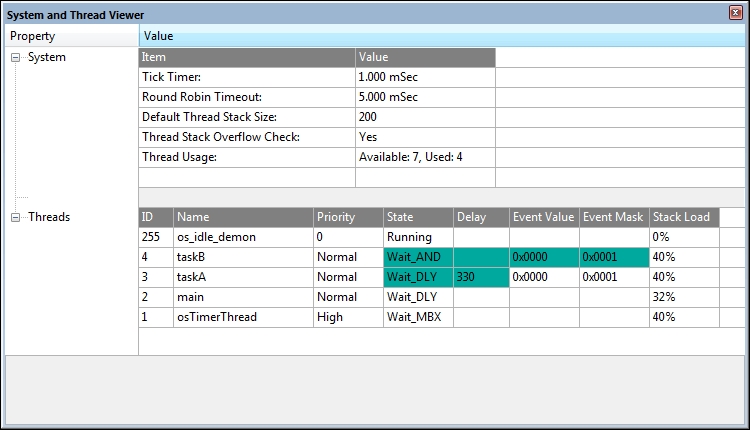Using Keil's ULINK, we can gather and display general information about system resources while debugging our program.
Clone the
RTXBlinkyproject that we described earlier in this chapter.Select Project → Options. Under the Debug tab, select Settings.

In the Cortex-M Target Driver Setup dialog, use the Debug tab to select the Serial Wire (SW) Communications protocol:

Still in the Cortex-M Target Driver Setup dialog, use the Trace tab to set the Core Clock frequency (168.0 MHz) and check Trace Enable:

Download and run the program.
Debug the program by selecting Debug → Start/Stop Debug Session (Ctrl+F5).
Select Debug → Run (F5) to run the program.
Select Debug → OS Support → System and Thread Viewer.

Select Debug → OS Support → Event Viewer. The cells that are highlighted in the following screenshot are updated in real time as the program...



